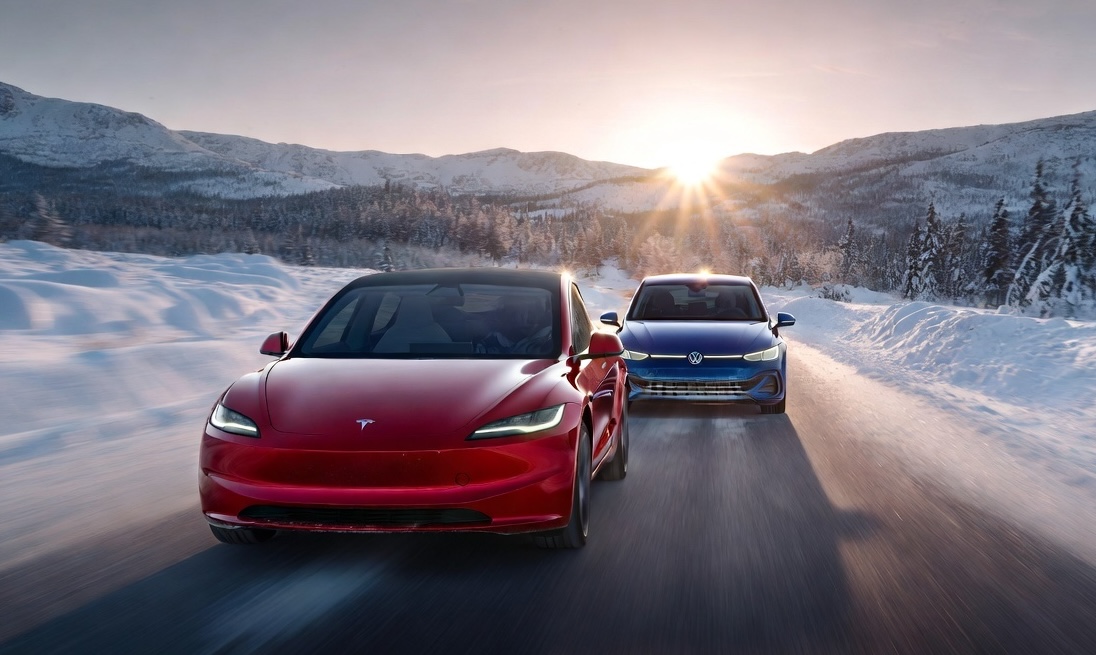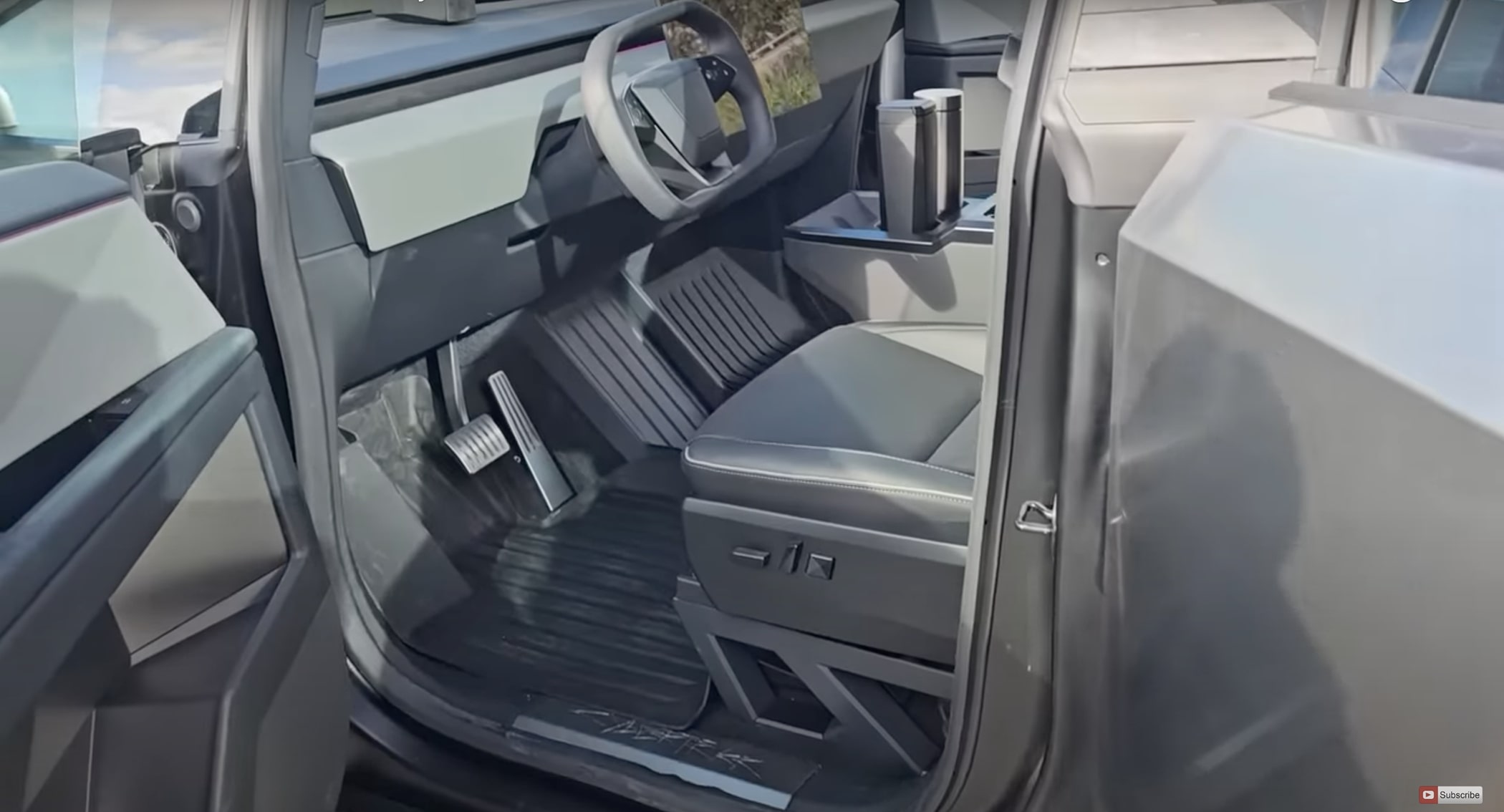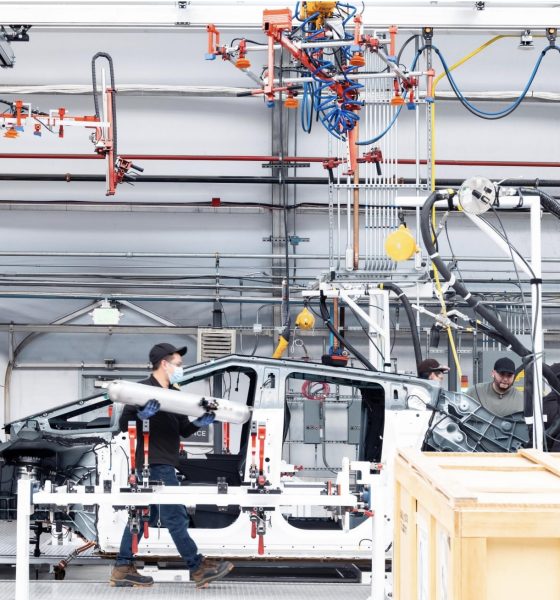During a recent interview with podcast host Joe Rogan, Tesla CEO Elon Musk shared some interesting details about the upcoming Cybertruck, including how many units the automaker is looking to produce per year.
When asked on the podcast how many Cybertrucks Tesla can make in a month, Musk told Rogan that Tesla is looking to build around 200,000 Cybertrucks per year upon scaling production.
“We’re aiming to make about 200,000 a year at volume production,” Musk said. “Maybe a little more, but I just can’t emphasize enough that manufacturing is much much harder than the initial design.”
“Not that the Cybertruck was easy to design, I’m not trying to trivialize design. What I’m trying to do is to emphasize the difficulty of manufacturing which is not understood by the public because there’s no movie about it,” Musk added.
The stated figure would put Tesla at over 16,500 units per month, for a weekly production output of more than 4,000 Cybertrucks. In May, Musk predicted Tesla would eventually build between 250,000 and 500,000 Cybertrucks per year.
Elon Musk reveals Tesla Cybertruck weight on Joe Rogan’s podcast
During Tesla’s Q3 earnings call, Musk also said that ramping up Cybertruck production would take 12 to 18 months. Musk’s statement also echoed past sentiments surrounding the difficulty in ramping up production of any vehicle, like the many times he has referred to the Model 3’s ramp-up as “production hell.”
In addition to discussing the Cybertruck production ramp, Musk shared how much he looks up to Ford Motors Founder Henry Ford, even calling him a “next-level genius.”
“The amazing thing about automobiles was not so much the invention of the automobile, but the invention of the factory and mass manufacturing,” Musk said. “And for that, Henry Ford deserves a lot of credit. He was a next-level genius. In fact, Ford is really responsible for the entire mass manufacturing industry because he actually founded Cadillac, which was the heart of General Motors, then he got kicked out and then started Ford. And then other companies copied him.”
The manufacturing details came among several other topics discussed during the podcast, which is over two hours long. You can listen to the full podcast below on Spotify.
What are your thoughts? Let me know at zach@teslarati.com, find me on X at @zacharyvisconti, or send your tips to us at tips@teslarati.com.

News
Tesla breaks Norway’s all-time annual sales record with one month to spare
With November alone delivering 4,260 new registrations, Tesla has cemented its most dominant year ever in one of Europe’s most mature EV markets.

Tesla shattered Norway’s decade-old annual sales record this month, overtaking Volkswagen’s long-standing milestone with over one month still left in the year. Backed by surging demand ahead of Norway’s upcoming VAT changes, Tesla has already registered 26,666 vehicles year-to-date, surpassing Volkswagen’s 2016 record of 26,572 units.
With November alone delivering 4,260 new registrations month-to-date, Tesla has cemented its most dominant year ever in one of Europe’s most mature EV markets.
Model Y drives historic surge in Norway
Tesla’s impressive momentum has been led overwhelmingly by the Model Y, which accounted for 21,517 of Norway’s registrations this year, as noted in a CarUp report, citing data from Elbil Statistik. The Model 3 followed with 5,087 units, while the Model S and Model X contributed 30 and 19 vehicles, respectively. Even the parallel-imported Cybertruck made the charts with 13 registrations.
Demand intensified sharply through autumn as Norwegian buyers rushed to secure deliveries before the country’s VAT changes take effect in January. The new regulation is expected to add roughly NOK 50,000 to the price of a Model Y, prompting a wave of early purchases that helped lift Tesla beyond the previous all-time record well before year-end.
With December still ahead, Tesla is positioned to extend its historic lead further. Needless to say, it appears that Norway will prove to be one of Tesla’s strongest markets in Europe.
FSD could be a notable demand driver in 2026
What’s especially interesting about Tesla’s feat in Norway is that the company’s biggest selling point today, Full Self-Driving (Supervised), is not yet available there. Tesla, however, recently noted in a post on X that the Dutch regulator RDW has reportedly committed to issuing a Netherlands national approval for FSD (Supervised) in February 2026.
The RDW posted a response to Tesla’s post, clarifying the February 2026 target but stating that FSD’s approval is not assured yet. “The RDW has drawn up a schedule with Tesla in which Tesla is expected to be able to demonstrate that FSD Supervised meets the requirements in February 2026. RDW and Tesla know what efforts need to be made to make a decision on this in February. Whether the schedule will be met remains to be seen in the coming period,” the RDW wrote in a post on its official wesbite.
If FSD (Supervised) does get approved next year, Tesla’s vehicles could gain a notable advantage over competitors, as they would be the only vehicles on the market capable of driving themselves on both inner-city streets and highways with practically no driver input.
News
Tesla Full Self-Driving v14.2’s best new feature is not what you think

Tesla Full Self-Driving v14.2 rolled out late last week to Early Access Program (EAP) members, but its best feature is not what you think.
While Tesla has done a great job of refining the performance of the Full Self-Driving suite with the latest update, there are some other interesting additions, including one that many owners have requested for some time.
Upon the release of v14.2, many owners recognized the Blue Dot next to the Autopilot tab in Vehicle Settings, notifying them of a new feature. What was included as a new feature in the new update was a Full Self-Driving stats feature, which now will show you how many miles you’ve traveled in total, and how many of those miles were driven using FSD:
🚨 The coolest non-driving change of Tesla Full Self-Driving v14.2 pic.twitter.com/HOJcFaV2Ny
— TESLARATI (@Teslarati) November 21, 2025
The feature seems to be more of a bragging rights thing than anything, but it will also give drivers a good idea of how many miles they are using Full Self-Driving for. Those who use telematics-based insurance services will also be able to run experiments of their own, and could determine whether their premiums are impacted by the use of Full Self-Driving, and whether it is more advantageous to use over manual driving.
Tesla rolled out numerous other improvements with Tesla Full Self-Driving v14.2, most notably, the company seems to have resolved previous complaints about brake stabbing and hesitation. This was a major complaint in v14.1, but Tesla has seemed to resolve it with this newest branch of the FSD suite.
There were also improvements in overall operation, and it was notably smoother than past versions. Speed Profiles are seemingly refined as well, as they seem much more fixed on how fast they will travel and how aggressive they will be with things like passing cars on freeways and lane changes.
In future updates, Tesla plans to add Parking Spot selection, along with overall operational improvements. However, CEO Elon Musk recently said that the next branch, Full Self-Driving v14.3, will be where the “final piece of the puzzle is placed.” Tesla believes it is close to solving autonomy, so v14.3 could be a major jump forward, but it remains to be seen.
News
Tesla adjusts crucial feature as winter weather arrives

Tesla has adjusted the functionality of a crucial climate feature as Winter weather has started to arrive throughout some parts of the United States. The new feature was highly requested by owners.
Tesla has a Cabin Overheat Protection feature that helps keep the temperature regulated if it reaches a certain threshold. Inversely, it can be used in cold weather as well, which will automatically warm the cabin if it sinks to a temperature that is too low for the owner’s comfort.
This is a great way to keep the cabin either warmed up just enough or cooled down just enough so that it never gets too hot or too cold. Extreme temperatures could damage certain parts of the vehicle or damage personal belongings that are kept inside the car.
Overheat protection is a great thing to have in hot climates like Arizona or Texas, especially with the Premium trims of the Model 3 and Model Y, which feature a glass roof.
Many owners appreciate the feature, but they argue that using it at home will utilize too much energy, especially during extreme temperatures. For a while, many Tesla fans have requested an option to disable this feature when the car is parked at home, which the company recently added, according to Not a Tesla App.
The feature is part of Software Version 2025.44.3, and the release notes state:
“You can now choose Exclude Home when Cabin Overheat Protection or No A/C is enabled.”
Tesla has been great at listening to what owners want with new features, and this is one that will reserve some charge and prevent unnecessary utilization of available power, especially as the car is parked at home. If owners want to condition the cabin or get the car ready for operation with a comfortable interior, they can utilize the Tesla app to adjust the climate.










